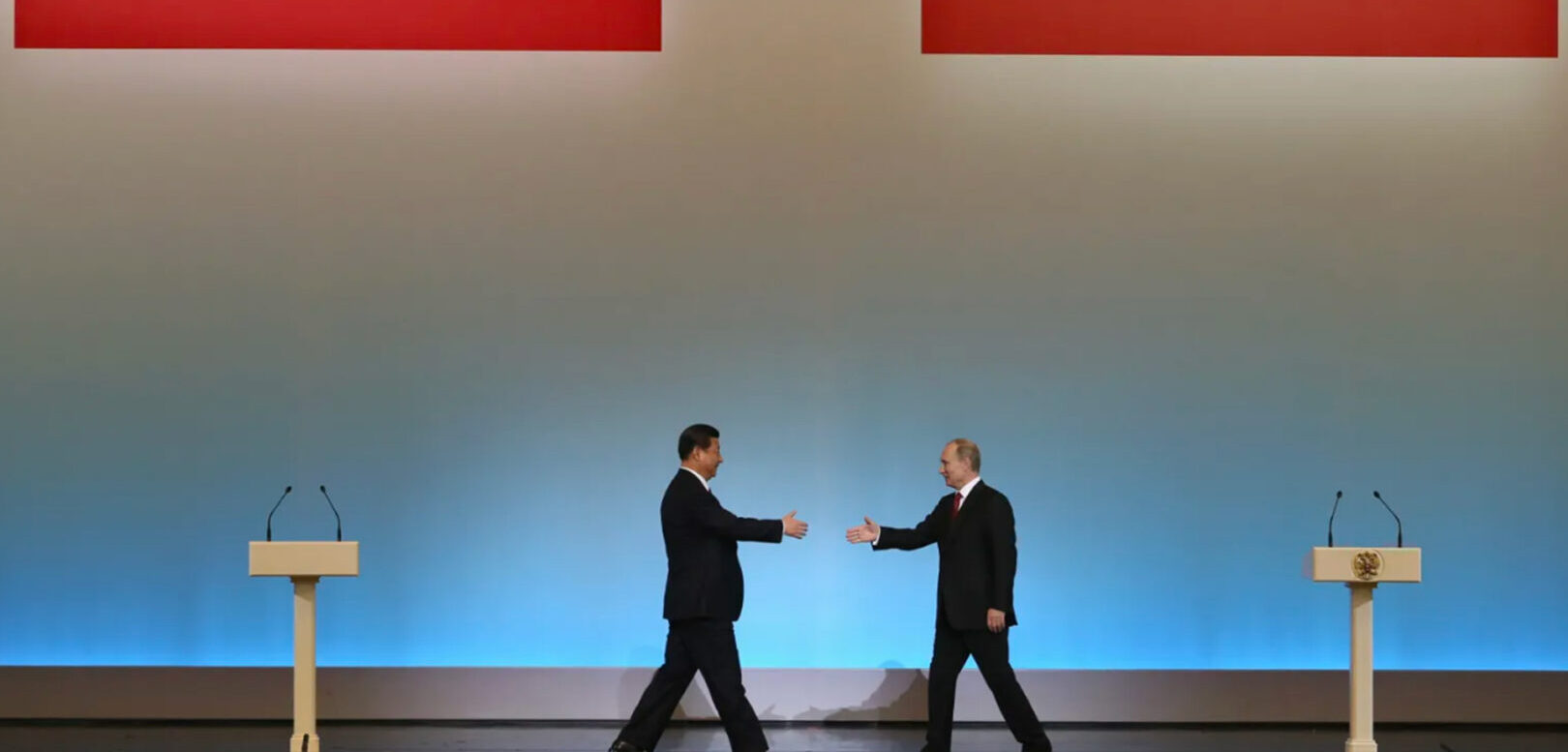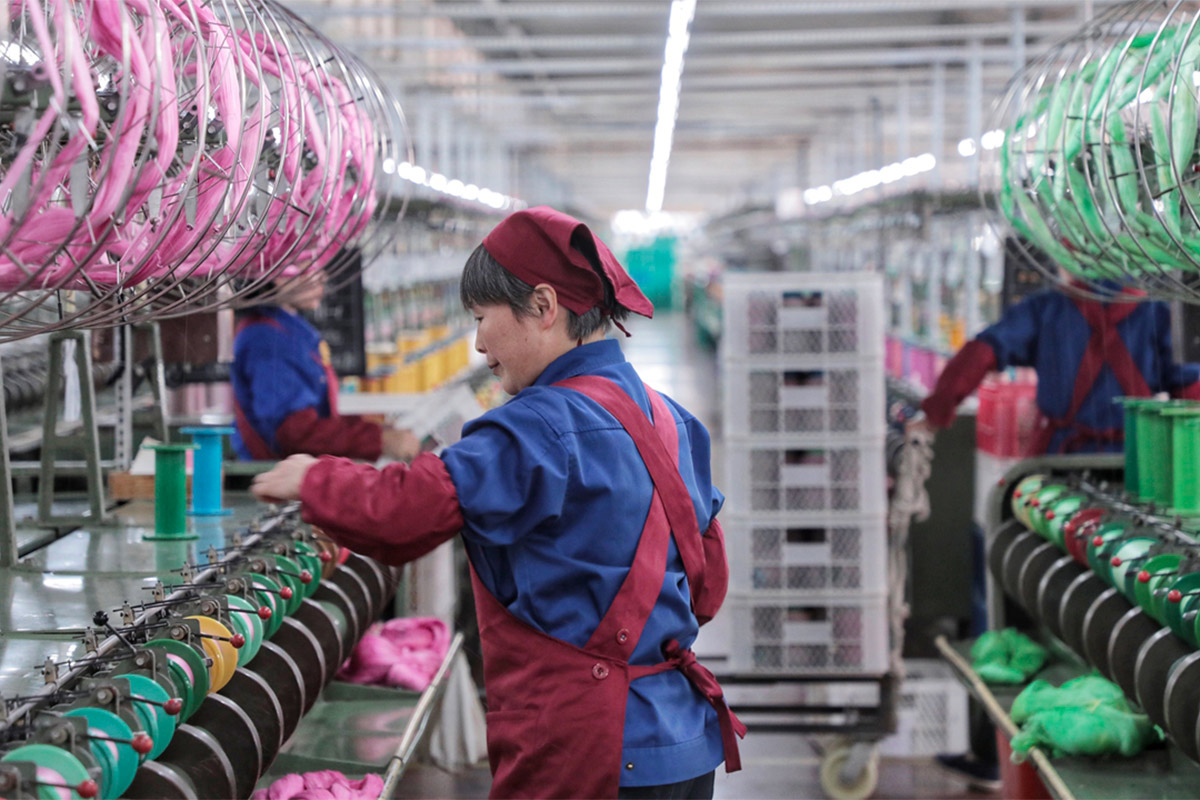«The cooperation implies they are aligned and share common interests, but don’t always have to act together». In conversation with Professor Sergey Radchenko
The textiles shortage and crisis
The tensions between Russia and Ukraine continue to place the world order into greater uncertainty. Most notable economic impacts; felt through the commodity as well as logistics sectors; and a dramatic rise in prices of major fuel products and food staples.
These, among others, will add to already high inflation levels affecting European economies. More dependent on supplies from Russia and Ukraine. One major repercussion of the conflict is in the textile and apparel industry. Here the two countries are facing a significant shortage in the supply of raw materials; and as a consequence in the export segment.
Russian textile industry accounts for nearly half of Russia’s light industry as one of the three major contributors in this sector; together with the sewing industry, leather, fur processing and wool joint processing industry. Textiles and apparel have always accounted for a large proportion of bilateral trade between Russia and China.
In twenty years, China’s textile and apparel exports to Russia increased from 1.11 billion USD to 7.65 billion USD, and over the past 20 years, the exports to Russia have increased nearly six times. An important fact to highlight is that China’s textile and apparel trade with Russia is mainly export.
Supply chain disruptions in Eastern countries
Businesses in the Eastern countries, like Vietnam and Cambodia, already put to the test from supply chain disruptions; as a result of China enforcing strict Covid-19 policies, are facing another textiles shortage crisis.
This has significantly hit raw material supply and exports; as China usually supplies a large quantity of materials used by many Vietnamese industries, including textile and garments. The problems are in importing components and raw materials, resulting in production delays and not honouring export order commitments.
Since the conflict between Ukraine and Russia, the risk of navigation has increased due to the continued occurrence of security incidents. One significant cause of concern for the global textile and apparel industry is the rising cost of essential raw materials and raises the cost of labour.
Russia’s dominance on exports and the relationship with China
One main aspect to keep in mind when it comes to dissect Russia’s geopolitical and economic framework is its relationship with China. On this matter, we interviewed Sergey Radchenko, historian of the Cold War and Wilson E. Schmidt Distinguished Professor.
«China is actually Russia’s number one trade partner; whose value has increased especially now, with Russia’s isolation and the sanctions coming from the European Union. On the other hand for the Chinese economy, Russia does not even enter in the top ten economic partners. However, Russia is important as a provider of energy. Russia supplies China with oil and gas through major pipelines. And those allow Russia to earn cash where the prospects of export over Europe are uncertain. Because of the cancellation of Nord stream, and the conversations that are being held right now in the European Union about potential hazing out Russia’s oil and gas. I would say that from the economical point of view Russia needs China more than the Chinese need the Russian market. Because the Russians are mainly selling their natural resources; and they are attached to infrastructure».
Also forestry export, and trees from Siberia, all exported to China. In other spheres their cooperation is not that important. For many years there was a lot of military cooperation, with Russia supplying military technology to China. In recent years that has not really being the main driver of their economic operation because China is producing its own.
The history of China and Russia international relations
The stages that brought Russia and China economic co-dependency are in the origins of the Sino-Russian diplomatic affairs.
«China and Russia first encountered one another back in the Seventeen century, where the two empires clashed» told Radchenko.
«By the Nineteen century Russia became the stronger empire and pushed against China and annexed large part of Chinese territory. After the Communist revolution, the Soviet communist tried to support the Communists around the world. Hence the Chinese communist party, first established in 1921. After that, when the Chinese communist won civil war in China the Soviet Union started providing a lot of help to them. In 1950s the Sino-soviet alliance; so it is called, implied they were working very closely together.
In the Sixties, their relationship spoiled for a various number of reasons. The situation got very tense because China did not want to be the ‘younger brother’ in this alliance; so they went to war, fighting over disputed border. For much of the Cold War, their relationship was deeply frozen. Until it started to improve in the mid-1980s; and then by 1989 normalized under Michail Gorbačëv. They grew closer and closer under Él’cin and Putin to the present».
As for now, they understand that in specific terms, each country needs the other, and they don’t want to go back to when they had a military conflict. This is a relationship where the two countries provide each other with support; meaning they are aligned and share some common interests. But don’t always have to act together.
Sanctions and countermeasures
The conversation held in Europe since the very beginning of the conflict is: How do you decrease reliance on Russian energy exports without driving up the prices of consumers? The United Kingdom and Italy have already registered gigantic increases in the price of petrol and gas for household heating, and it will only get worse once the winter comes.
«Russia relies heavily on the exports of raw materials to fill their budget holes. They rely on earnings of hard currency, and when it faces the situation where you have a drop in the exports, then there’s a possibility that it will not earn so much hard currency and that will create difficulties domestically for Putin’s regime. However that possibility is compensated by the fact that the prices are going up. Russia is exporting less now than before the war, however the prices are going up. Therefore Russia is earning and it’s making up, for the loss of exports volume in terms of increase of the prices» explained Radchenko about the current situation driven by Putin’s behaviour.
When China comes to business talk with Russia, they often push Russia very hard in the subject of price. While Russia is facing international sanctions, China will take advantage of the situation, implying that it will be even more difficult for the Russian to obtain a good price with the Chinese.
What to expect in the future: economic and diplomatic outlook
Since China is helping Russia evade the sanction regime (by selling and shipping to Russia, for example), the Chinese could come under secondary sanctions. Which means that their companies could be sanctioned by the West for dealing with Russia; and this would be extremely unprofitable for them.
«China has always looked after their interests; since the Russian trade has been adversely affected by the war in Ukraine, the Russian hope the Chinese will bail them out. Because of the long term relationship they have, providing them for what they lack, but this is not necessarily going to be the case.
In every instance, the Chinese will think very hard ask them themselves if they want to risk the possibility to come under sanctions. The Chinese are very careful, very risk averse as businessmen. Yet, they drive a very high bargain and they look for the best deals, the best opportunities, and safer environments. At the moment, for the Chinese it’s best to invest in Europe or in the United States because there’s rule of law and no sanctions».
The Sino-Russian relationship is providing its limitation. China and Russia are politically close, as Xi Jinping and Putin talk about each other like they are really good friends. But the real deal is yet to be unveiled in the next few months. The sanctions from the West will continue and the real test for both countries will be to see how economically China and Russia will adjust. «My feeling is that China is not going to help Russia».
Sergey Radchenko
Wilson E. Schmidt Distinguished Professor at the Johns Hopkins School of Advanced International Studies. His area of expertise, subjects about which he has written extensively, are the Cold War, nuclear history, and Russian and Chinese foreign and security policies.




















